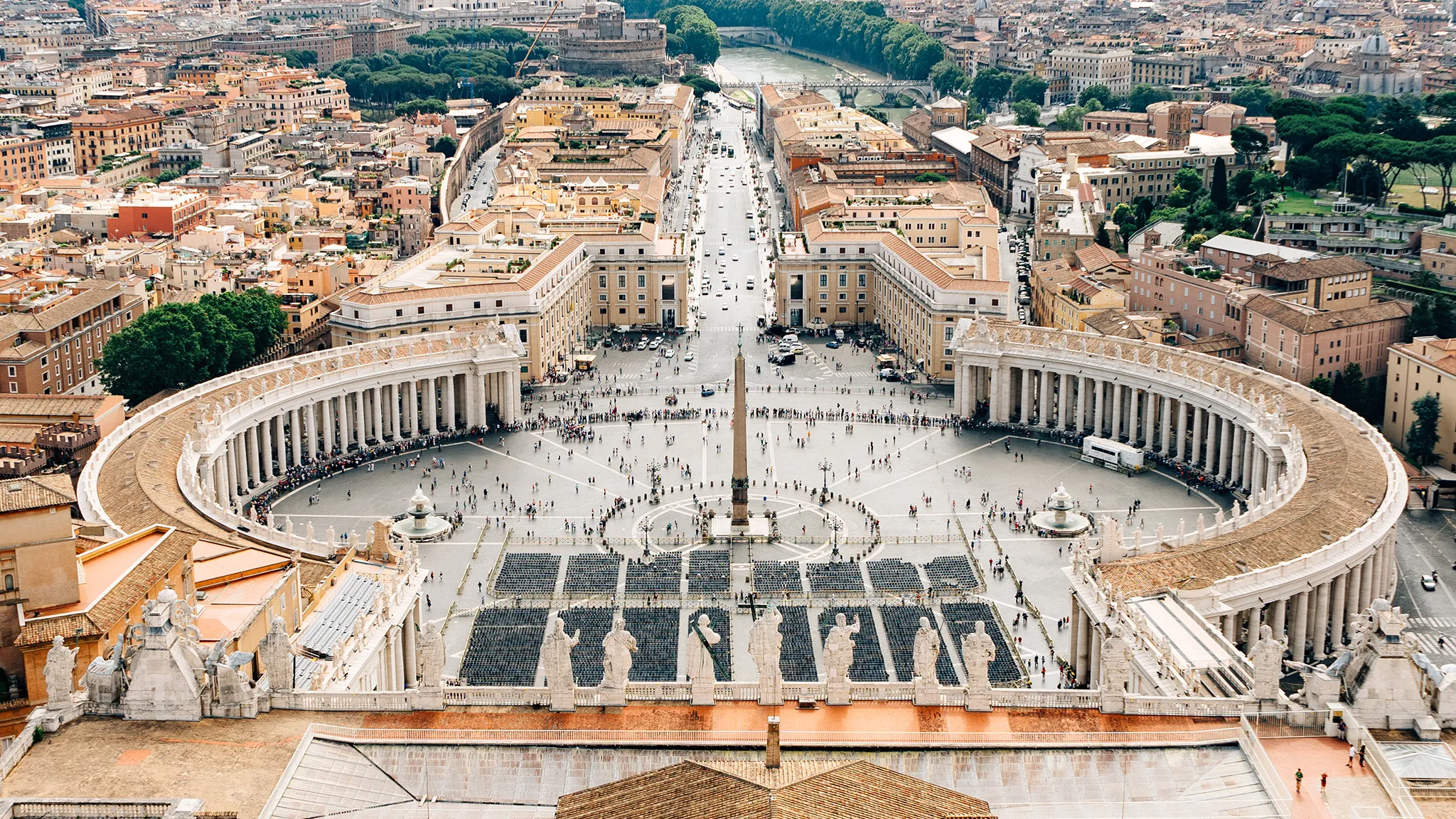
Two thousand years ago, when Nero ruled Italy, there was an amphitheatre where many Christians died. In the year 67, the apostle Peter was captured, tried and condemned to death and brought here. He did not wish to die in the same way as Christ, but asked to be put to death in a different way. He was crucified upside down and buried not far from his place of death. Three centuries later, a structure was erected on the spot where he was buried, which is now St. Peter’s Basilica.
This Basilica is the largest temple of the Vatican and until recently it was the largest Christian church in the world: its area exceeds 22 thousand square metres, its height – 133 metres, its length together with the portico is almost 212 metres. The basilica is designed for 60,000 worshippers, and the square in front of the Basilica can accommodate another 400,000 Christians.
The size of this church is only larger than that of the Basilica of Our Lady of Peace, built in 1990 in Yamoussoukro, the capital of Côte d’Ivoire, which covers an area of about 30,000 square metres. Despite its enormous size, however, it can only accommodate 18,000 worshippers.
History of the construction of the Vatican’s main temple
Where the church of San Pietro stands today, the gardens of Nero’s circus were once located. The first basilica was erected on this site under Constantine I in 326. All that remains of the early Christian structure is the monument in the centre of the modern square. The basilica’s altar was placed over the tomb of St Peter, who was martyred in AD 66. In the 15th century, the building was in ruins and threatened with destruction, so under Nicholas V it was restored.
Later, Pope Julius II decided to build the grandiose Basilica of St. Peter on the site of an earlier Christian basilica; the new building was to surpass not only the pagan buildings, but also the pre-existing Christian temples. The best Italian architects were involved in the project, but Bramante’s design was taken as the basis. After his death, the construction of the church was directed by Raphael Santi. In 1546 Michelangelo began the work. He made the load-bearing structures of the building more massive and raised the drum of the central dome. According to Michelangelo’s idea, four domes were to rise above the church, but after his death the project was modified and only two vaults were erected.
In addition to the construction of the church, plans were also made to build a square capable of accommodating a large number of worshippers. It was foreseen that a large number of parishioners would gather around the church walls and would want to participate in the festivities and listen to the Pope’s speech. St. Peter’s Square was designed by Giovanni Bernini and is today one of the most important landmarks of the Vatican.
Interesting facts
At St. Peter’s Basilica, like many other Vatican attractions, there are many interesting stories. Visitors to the enclave state will be curious to know:
The altar of St. Peter’s Basilica does not face east, as is customary in the Christian tradition, but west;
On the day of Pope Benedict XVI’s abdication, lightning struck the dome;
Italian policemen are only allowed to enter the church with a special invitation;
Bernini “copied” Michelangelo’s idea of making part of the square trapezoidal.
To enter St. Peter’s Basilica, ask in advance about opening hours. The attraction is open every day (except Wednesdays). On Wednesdays there is a papal liturgy. Wear modest clothing to enter the church; bare shoulders, knees and head should be covered. The dome of the Basilica is the best viewpoint in the Vatican. To get there you have to buy a ticket. You can reach the top on foot or by lift.
You may also like:
